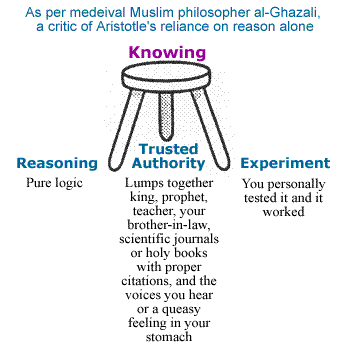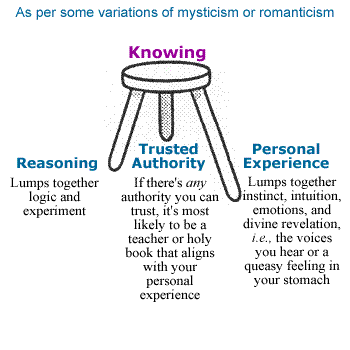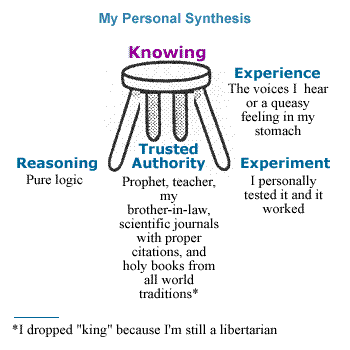You know how it is when you leave a partner or a paradigm behind, you focus on everything that was wrong with it? I have a suspicion that's what's at work for many of us when we outgrow and turn against values we were raised with—like loyalty to our ingroup.
Integral Theory tells me there are higher levels at which we re-integrate those values; we
transcend and include them. And I believe that when we get to those levels, former "liberals" and "conservatives" will meet up as integral
transpartisans.
Five universal values
I got a new way to think about this in Jonathan Haidt's "
The Real Difference between Liberals and Conservatives." In his TED video, the social psychologist tells his mostly liberal audience they could achieve more of their agenda if they'd drop some of their prejudices against conservatives. Unfortunately his talk introduces his findings in a way that could be offensive to conservatives, thus diluting his effectiveness. But his message is clear in the paper in which he defends his "
Five Foundations Theory." It claims that five values undergrid the world's many moralities, but liberals and conservatives emphasize the values differently.
He says liberals and conservatives value these two about equally
- Care/Protection from Harm
- Reciprocity/Fairness
But generally, conservatives place more emphasis on
- Authority/Respect
- Loyalty/Ingroup
- Purity/Sanctity
Haidt concludes:
We in psychology, and in academe more generally, have a tendency to reject conservative concerns related to ingroup, authority, and purity as "bad" on the grounds that they often conflict with the "good" moralities of harm and fairness. We dismiss the conservative outgroup's morality as "motivated social cognition" driven by non-moral concerns such as fear of change. Doing so makes us feel good, but it should not, for it is a violation of our values (we become "politico-centric"), and it is a route to irrelevance (we cannot persuade the electorate, because we do not have an accurate picture of their moral motivations)...
[For example] Conservatives and many moderates are opposed to gay marriage in part due to moral intuitions related to ingroup, authority, and purity, and these concerns should be addressed, rather than dismissed contemptuously... Recognizing these foundations as moral (instead of amoral, immoral, or just plain stupid) can open a door in the wall that separates liberals and conservatives when they try to discuss moral issues.
I can say a loud "Amen" based on
my experience living among the fundamentalists for two years. When I worked hard to understand their concerns about homosexuality, the result was a willingness to drop their support of gay marriage bans—because, "Judgment is up to God, not the government." While this outcome is not wholly satisfactory to many, the question is, would you rather make progress like this or is it more important to keep proving how wrong the other side is?
Beyond Merely Acknowledging Conservative Values
I can hear most of my
integral buddies saying, "OK, fine, conservatives have ethical values. But
Spiral Dynamics shows us they are low-end ethics." And that's half true. But mapping Haidt's data against the spiral makes it clearer than ever to me why we must reintegrate those "conservative" values as we reach the higher levels. Haidt implies this by asking, "Why has the moral domain shrunk for educated secular Westerners?" Instead of merely transcending and tolerating conservative values, we must also find a way to include them.
Research indeed backs up the liberal feeling that some conservatives' ethics are lower. (An integral perspective tells us that a "higher" value is one with a bigger perspective—it takes more into account.) In
Kohlberg's famous stages of development, purity, respect for authority, and loyalty arise in the early stages (pre-conventional and conventional), while care and fairness arise in the later post-conventional stages. [
Update: Whoops, that last clause is wrong, as pointed out in Karl's comment below. Care & fairness emerge early. But they are weak until post-conventional because they are overshadowed by the primary values at the lower levels, and they are applied only to one's ingroup.] Thus Haidt asks whether the three conservative values are "just manifestations of Kolhberg's 'immature' conventional morality stages." If we look through the lens of an
integral perspective, the answer is "yes" in the lower stages but "maybe not" as we approach the top.
One of Integral's best tools is
Spiral Dynamics, a scheme which elaborates on Kohlberg's stages with the insight that values emerge in a natural progression that loops from concern for the individual to concern for the group. Haidt's five values map perfectly to the Spiral levels as shown below.
(The grayed values are inactive, and the line of grayed values at the bottom level represents my inclination to go along with Haidt's claim that we are born with a "taste bud" for these values. This contradicts Spiral Dynamics' claim that values emerge from experience. But it's my chart, so I'm going out on that limb.)
At first glance at this chart, liberals may be tempted to say, "See, our orange/green values are higher than conservatives' red/blue values." For even when blues try to be good Samaritans, providing care to an outgroup, they can only provide the kind of care they themselves would want. It's not till green that we can take another's perspective--love our neighbor
as ourselves.
But look closely and notice what happens at the orange level of teens, corporate culture, and the Enlightenment. Up until this level, the values have been coming into focus and staying in focus. But Haidt's findings seem to suggest that the teenager now breaks with convention, rejects the first-flowering values of purity/sanctity, authority, and loyalty, and he or she
substitutes the new values of reciprocity/fairness and then care/protection from harm. We feel we have transcended the "lower" values. In the case of loyalty, for example, we shift our loyalty from our ingroup to all humans, or to an ideal, or even to ourselves, recasting it as "to thine own self be true." "Loyalty" feels outdated.
Integrating all five at the high end
But notice the yellow "integral" level at the top of the chart. This is the level at which we integrate the values of all prior levels. This is the level at which we reclaim the previously transcended values.
We see that authority, loyalty, purity, and sanctity have a rightful place in higher level morality and we want them back.
We'll know we have thus transcended and included each of these values when we can
consciously choose among them from a broader perspective. Indications that we are at this level include
- We are not knee-jerk controlled by any one value
- We are passionately for each value without being against the others
- We can access each value when appropriate
- We avoid extremes by integrating opposites: For just as too much loyalty breeds revenge, we come to see that too much reciprocity breeds heartless legalism and too much care breeds what Buddhists call idiot compassion.
- We are not 100% sure we are right but we are willing to make tough choices in full humility that we may be wrong
- We loosen identity with a political party, seeking to become transpartisan
Taking loyalty as an example, our top loyalty may indeed now rest with an ideal or with all people, instead of with our ingroup of family, community, tribe, or nation. But when our ingroup needs help, distinctions between
our needs and
its needs may seem less sharp. I believe each of the transcended values must be re-included in a similar fashion if we are to be truly mature. And if the idea of re-valuing "purity" gives you the hives, ask yourself if you wouldn't be the least bit uneasy if your spouse was using pornography or your teenager was frequenting casual sex parties.
Voila the remnants of the moral taste bud for purity. Do we really have no more use for it? (For everything you need to know about purity and sanctity, see my
One chart that Explains Religion.)
So who holds all five values?
If people at the upper level weigh all five values, why doesn't Haidt's research show any liberals holding all five values? I can see three reasons.
- Haidt's questions aren't designed to sniff out the distinctions in the list above. So a person at the integral level who weighs loyalty to family against loyalty to every other human being may not test out as being "loyal" at all (see Karl's fantastic comment below)
- Haidt apparently drops data from those who identify themselves as "independents," "libertarians," or "other," and those are exactly the categories in which the integral transpartisans may be hiding out
- Ethical values are only a subset of the values that distinguish conservatives from liberals, and those labels don't take into account variation within the two camps--as identified in my One Chart that Explains all Politics
But of course, the other side of the question of why no liberals hold all five values is why all conservatives do. I believe the answer is that some of these conservatives are at integral. (In a future post I'll assess the shortcut (
hint: ladder) that I think got them there.)
Distinguishing high level values from low level
The problem is, it can be impossible to tell the difference between someone acting at a higher level (with a broader perspective) and someone at a less mature level.
Let's take, for example, Sarah Palin's demotion of her state trooper brother-in-law. From the publicly available details, it appears Palin chose loyalty over reciprocity and even over respect for authority. Most everyone will agree that would be wrong and extremely dangerous in a public leader. But if you are a conservative pre-disposed to like Palin, you may look for evidence there were extenuating circumstances such that she did what she felt she had to do to protect her family from imminent
harm. On the other hand, if you are a liberal pre-disposed to dislike Palin, you are more likely to assume she acted from the shadow side of loyalty, taking revenge into her own hands. From the outside, those two acts look the same.
And that's what's wrong with so much religious and political debate today. We assume the highest motives for our side and assume the lowest for the other side. What could happen if we flipped that script—checking ourselves for lower motives while giving our opponent the benefit of the doubt about theirs? My experience shows that the release of pressure we get when we do so creates space for something new to happen.
Haidt seems to agree.
Social justice researchers might benefit from stepping out of the"good versus evil" mindset that is often present in our conferences, our academic publications, and our private conversations. One psychological universal (part of the ingroup foundation) is that when you call someone evil you erect a protective moral wall between yourself and the other, and this wall prevents you from seeing or respecting the other's point of view.
It's more entertaining to watch people throw rocks at each other over the wall than it is to watch the slow, difficult process of dismantling the wall...
My
next post will kick around the kinds of survey questions that could distinguish integral transpartians who truly weigh all five values from those conservatives who
see themselves as attempting to do so but who always end up privileging the earlier values over the later ones. And I'll be asking for your help. Take a moment to subscribe below so you won't miss a thing.
 Let's say I believe the world will end through global warming. My neighbor believes the world will end when Jesus comes to slay non-believers and take believers to heaven. My response to my belief is to buy guns to fend off the hordes of beach dwellers I expect to swarm my upland property. My neighbor's response to her belief is to stock up canned goods and plan to share them with all comers in the last days.
Let's say I believe the world will end through global warming. My neighbor believes the world will end when Jesus comes to slay non-believers and take believers to heaven. My response to my belief is to buy guns to fend off the hordes of beach dwellers I expect to swarm my upland property. My neighbor's response to her belief is to stock up canned goods and plan to share them with all comers in the last days.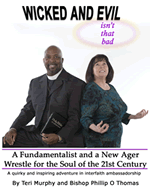

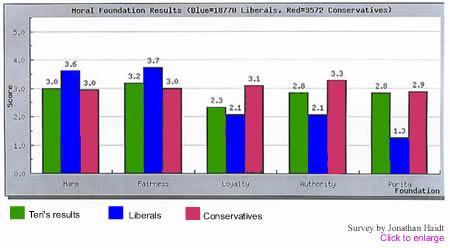
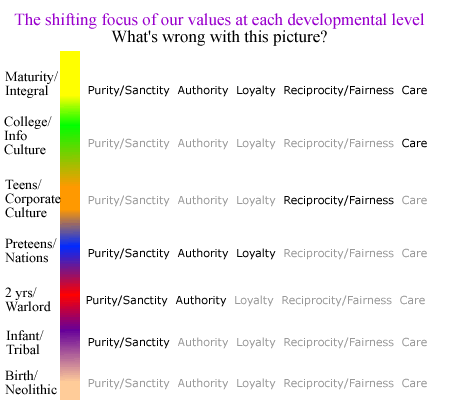
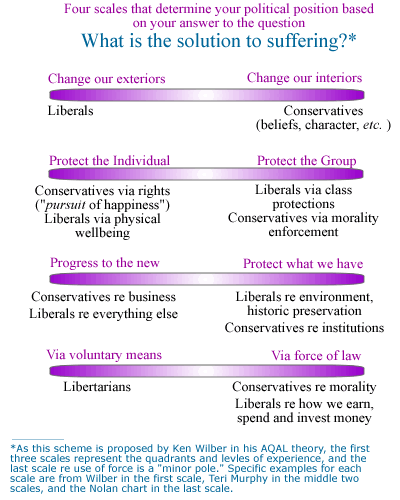
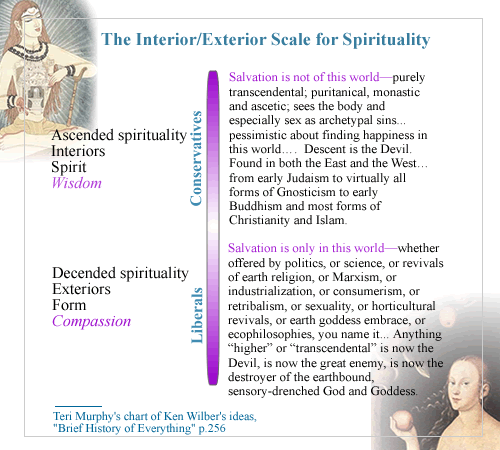
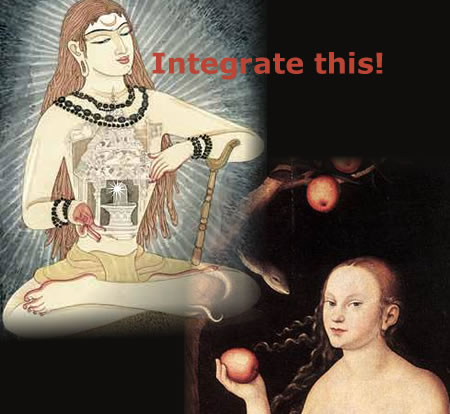
 Many of the Klansmen Davis met this way were so taken aback, and then moved by his willingness to dialogue with them, that they eventually surrendered their Klan membership and presented their robes to Davis. Several became his friends.
Many of the Klansmen Davis met this way were so taken aback, and then moved by his willingness to dialogue with them, that they eventually surrendered their Klan membership and presented their robes to Davis. Several became his friends.  I was irritated about a client's demand that I drive way out to her house to finalize our deal. Why not just fax it? But the evening turned into a blessing: in this season of having my stereotypes busted, I added two more: Muslim values and the possibilities for reinterpreting ancient rituals.
I was irritated about a client's demand that I drive way out to her house to finalize our deal. Why not just fax it? But the evening turned into a blessing: in this season of having my stereotypes busted, I added two more: Muslim values and the possibilities for reinterpreting ancient rituals.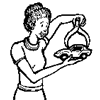




 And finally, it took a Muslim scholar and imam to give me the tool for integrating all appropriate outside standards with my internal guidance. I took a class from
And finally, it took a Muslim scholar and imam to give me the tool for integrating all appropriate outside standards with my internal guidance. I took a class from 